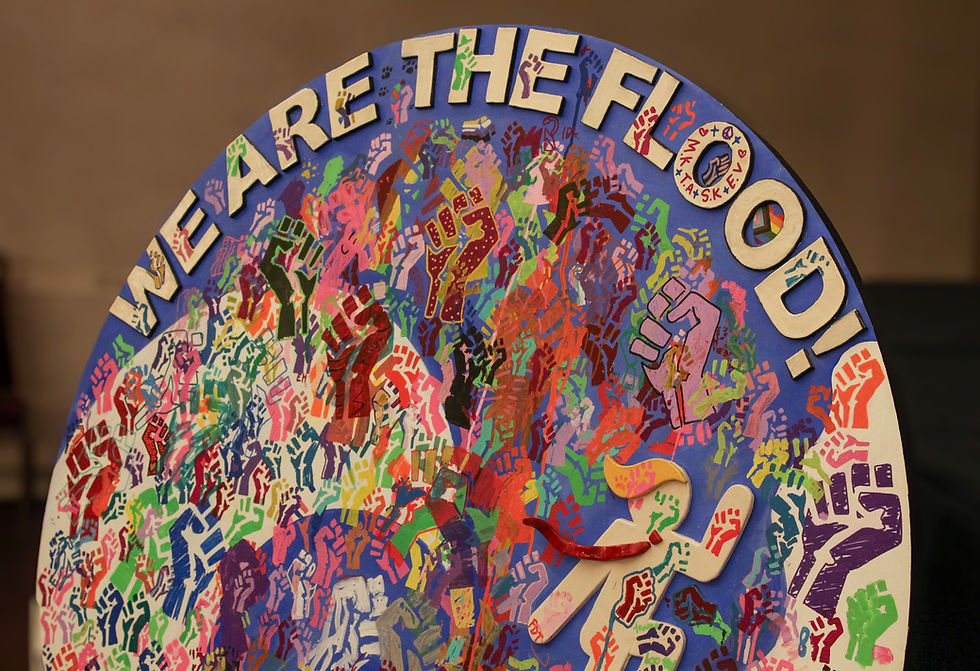Campus climate survey returned to Willamette
- Collegian staff
- Sep 17, 2019
- 3 min read
Sophie Smith
Editor-in-chief
slsmith@willamette.edu
The Office of Equity, Diversity and Inclusion will present the findings from February’s Campus Climate Study survey at this week’s convocation, which will be held in Ford Hall’s Kremer Board Room at 11:30 a.m. tomorrow, Thursday, Sept. 19.
Last semester, all Willamette University students, faculty and staff had the opportunity to participate in the climate study by taking a two-part survey. According to the Willamette website, the survey was an effort for the University to “better understand the extent to which our campus climate supports diversity and equity, and to inform and improve support, policies and practices at our institution related to diversity and equity.”
The survey was split into a quantitative section and a short answer section, the second of which consisted of survey takers’ personal testimonies about their time at Willamette and their opinions of campus. The University received the written answers of the survey this summer, but did not receive the quantitative data until recently. Since receiving this data, the Office of Equity, Diversity and Inclusion has planned several forums to present the information. Tomorrow’s convocation is the first of these forums. A full report will be posted online soon.
Willamette purchased the survey from the Higher Education Data Sharing Consortium, or HEDS. HEDS is an organization that creates surveys and data sharing programs for its member universities. Jade Aguilar, Willamette’s Vice President for Equity, Diversity and Inclusion, explained the University’s reason for purchasing the survey from a third-party organization.
“It’s really hard to make a survey without putting your own bias in it. If you can buy a survey from a reputable organization that knows what they’re doing, then your chances of having a better survey are increased. When you have a survey that other schools use, you can have some comparative data. We will be able to, at some point, see what other schools answered.”
Willamette took this survey at the same time that eight other universities did. In the near future, the University should receive comparative data that shows how WU’s results look relative to these other schools.'
“It’s still valuable to see what we answered, but it will be interesting to see what Pacific said,” Aguilar said, referring to Pacific University, which also participated in the study.
Willamette does have access to comparative data that shows the engagement rate of the survey. Of the nine schools that participated, Willamette students displayed the highest engagement rate, with 47 percent of all students taking the survey. The next highest rate was from Skidmore College in Saratoga Springs, NY, with 32 percent. Willamette tied for second among faculty and staff engagement with an engagement rate of 56 percent, trailing only Goshen College.
Aguilar credits this high response rate to the work student employees in the Office of Equity, Diversity and Inclusion did to market and advertise the survey.
1,339 people at Willamette took the survey and 1,186 wrote at least one comment. 89 percent of people who engaged with the survey participated in the short answer section. More detailed quantitative results will be revealed at Thursday’s convocation.
Over the summer, groups of University staff and students studied the written portions of the survey. Those who read the comments convened to discuss patterns they all observed in the data. A more full description of these patterns will be revealed at convocation, but Aguilar said one main theme the group observed was that those who took the survey wished to see a more cohesive community at Willamette.
“A pretty pervasive theme emerged: satisfaction with your small group, but a sense of dissatisfaction with University-wide community,” Aguilar said. “People have really close, small groups. They like their coworkers, they like their friends…. But they feel like there are divisions and factions across campus.”
Moving forward, the Office of Equity, Diversity and Inclusion plans to host forums or discussion groups to better understand how community members think the University can best establish this sense of community.
Amarit Ubhi (‘20), the President of the Associated Students of Willamette University (ASWU), read half of undergraduate and graduate students’ comments from the survey.
“Many of the student responses discussed diversity, transparency, safety, Greek Life, toxic masculinity and call-out culture,” Ubhi said. “Students also do not feel like they could trust the University as an institution, and this was especially reflected in the bias report question concerning why some students did not report incidents. I think clarity needs to be brought to this subject.”
Ubhi and Aguilar agree that the survey is but a first step in understanding campus climate and improving issues of equity, diversity and inclusion that exist on campus. Ubhi plans to utilize the ASWU External Affairs Committee “to collect feedback from the student body, as well as [to put] together forums and discussion groups to share with students.”
Aguilar said February’s climate study was the first of several, which will be conducted in three-year intervals.
“There’s more work to be done,” said Aguilar.




Comments